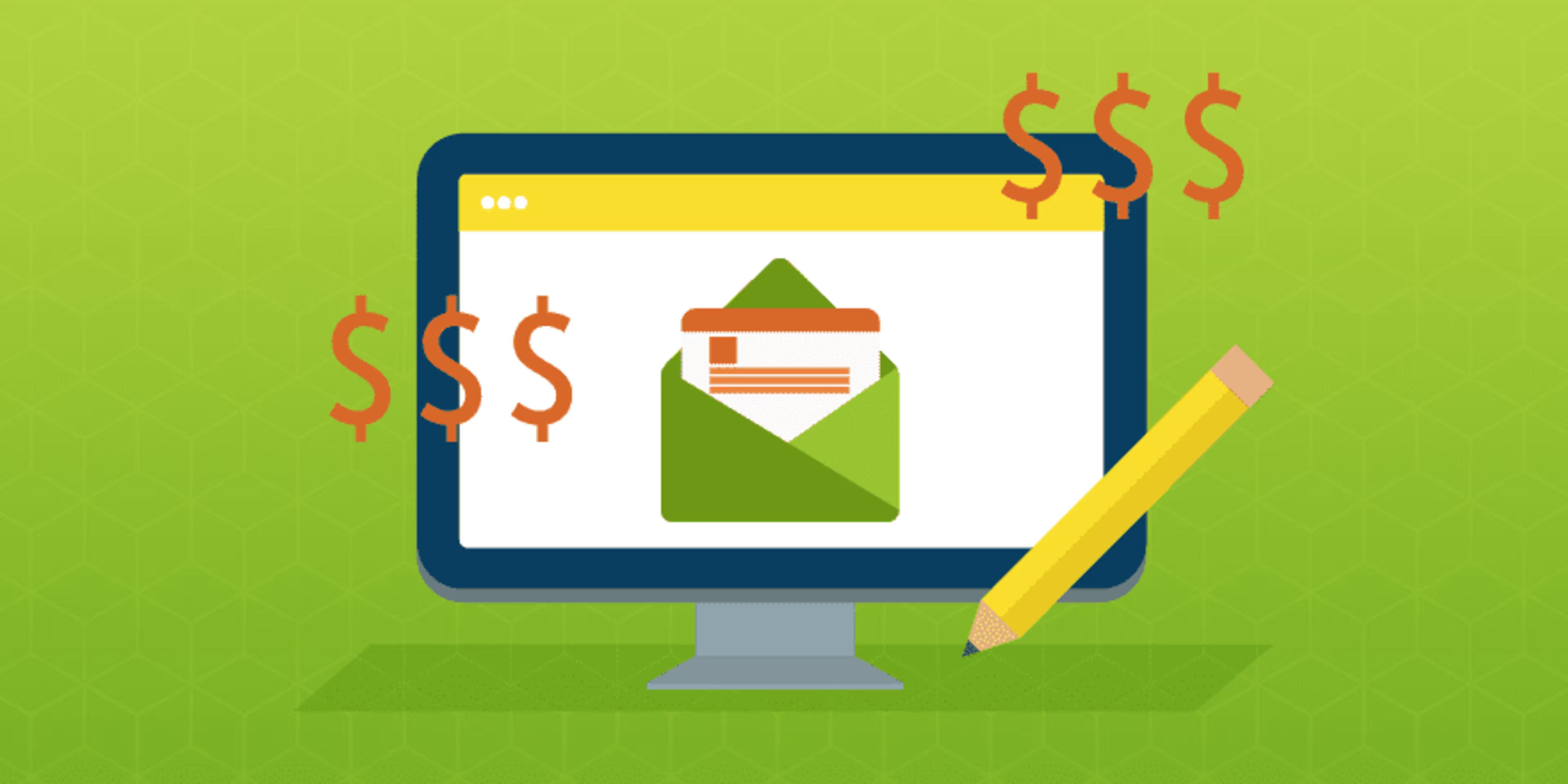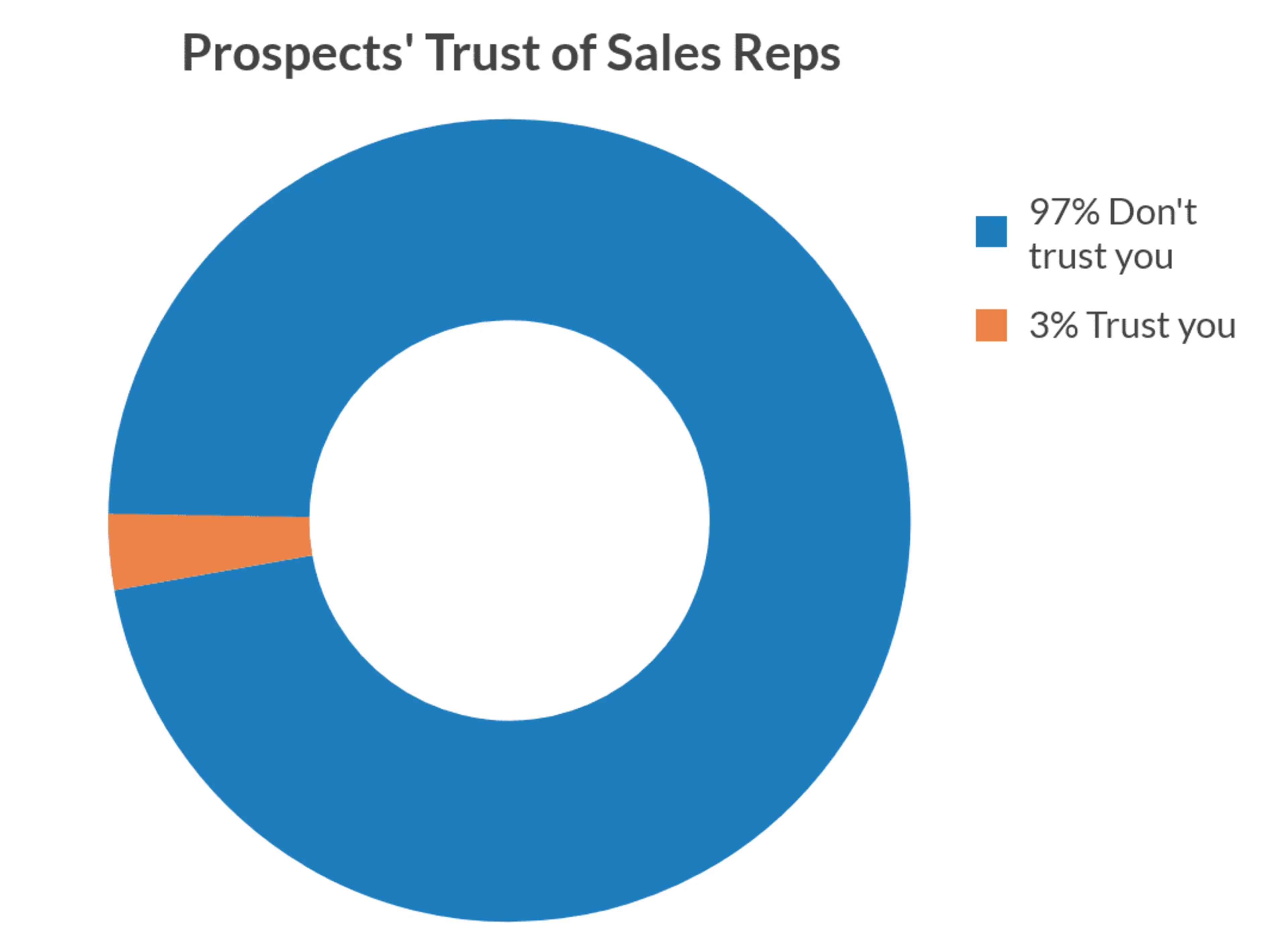I don't know about you, but work emails are the bane of my existence. I get hundreds of emails a day and delete most of them immediately.
I know I'm in the majority with my send-to-trash habits; the average open rate for sales emails is only 24%. And depending on your industry, that open rate can dip even lower.

As a salesperson trying to close as many deals as possible, you want to make sure that your emails are part of that 24%.
While it might seem like a long shot, there are a few tips you can follow to boost your open rates and reach more prospects.
6 B2B sales email tips to help you close the deal
Not only will these tips help you start meeting your sales quota, they'll also help you stop annoying potential customers.
Poorly written emails aren't endearing your business to anyone, prospects or otherwise. Use these tips to stop alienating prospects by sending better, thoughtful, more informative emails.
1. Use a compelling subject line
Sara Hartanov, the client success manager at Capterra, advises B2B sales teams to “ask a question, create urgency, and add value" in their email subject lines.
This doesn't mean using all caps to scream something at your prospects like “CAN YOU OPEN THIS NOW TO SAVE MONEY???"
It means conveying the importance of your message and hinting at what your company can do for a prospect's organization before they even open your email.
If you're pitching a product that is more cost-efficient than the competition's, for example, a subject such as “Want to save 20% on annual operating costs?" might do the trick to boost your open rates.
Your next step:
Start A/B testing subject lines to see what works best for your business. See which subject lines result in higher response rates.
You can do this manually, of course, but using an email tracking solution can provide more accurate results. If you don't have a company-provided tool for tracking email delivery and open rates, you can find one in our directory.
2. Keep it short
There's nothing worse than opening a business email and finding a novel inside. Though you might feel you have what it takes to write the next New York Times bestseller, your prospects sure don't.
Don't be Charles Dickens when it comes to email communication. Avoid big paragraphs and large chunks of text, and limit your emails to 50–125 words. And if you still feel the need to communicate intricate details to your prospects, follow the next tip to do so effectively.
Your next step:
Set a word limit for your emails going forward. Follow the word count suggestion from the stats mentioned above, or start tracking your word count to see what length generates the most responses.
3. Serve prospects a piece of content so they can find out more
Don't get me wrong, prospects like to know more about your product. They'll want to know how it works, how it can benefit them, and what it costs.
But they don't always want to hear that information from a salesperson.
I hate to be the one to break this to you, but less than 5% of buyers trust salespeople. The good news? That's more than people trust politicians. The bad news is that you're still being compared to politicians.

Who are the 3% of people who DO trust sales reps, honestly?
Conversely, nearly 95% of buyers trust their peers. If you're not doing the math, that's all the people who don't trust you.
Instead of personally touting the value of your product repeatedly in a rambling email, communicate that information to your prospects via case studies, white papers, third-party mentions of your product, or links to verified product reviews. Use as much information from customer advocates as possible to win over prospects.
Your next step:
Work with your marketing and content teams to create content that includes customer testimonials that demonstrate the value of your product.
4. Personalize your emails
As much as it's your job, no one wants to feel like they're being sold something. While you might—and should—have a sales script for your phone calls and templates to follow when emailing prospects, you shouldn't send stock emails to prospects.
Instead, customize the benefits of your product for individual buyers and companies. Even if you pitch your product as a time-saving solution to everyone, you can still personalize that statement in a few ways:
Mention what else they could be doing with their time—Could they be working on important projects they have coming up or providing the stellar customer service their company is known for?
Get specific—How much time will your prospect save using your product? Does that have a monetary value? If so, calculate it and let your prospect know.
Your next step:
Before sending an email to prospects, write down three concrete, specific reasons why your product or service would be a good fit for their business in particular. Share them with your prospect in your email.
5. Give a clear next step by making a specific ask
A prospect should never be left wondering what you want from them or why you reached out.
Don't assume that your prospect knows how the sales process works, and definitely don't assume that they're going to spend time puzzling it out after receiving a cryptic email from you. Make it easy for both you and your prospect to take the next step by spelling it out with a clear, specific ask or call to action (CTA).
That way, both you and your prospect are on the same page about what needs to happen before either of you can move forward in the sales process.
Your next step:
Add placeholders for prospects' next steps in your email templates so you don't forget to include one in every email. You can borrow the formula in the example below, or make up your own CTA.

Your ask should include specific details and clear expectations
6. Follow up regularly
Just because a prospect doesn't answer your first email doesn't mean you should give up on them. Odds are you'll have to reach out multiple times before getting in touch (if you even speak to the prospect at all).
Remember that as soon as you give up, your prospect will forget who you are. Use your CRM software to create reminders to follow up with potential customers so you don't let anyone slip through the cracks.
Do your part: Put an end to bad sales emails
Email is such a common method of professional communication that it's easy to brush it off. And since most sales emails aren't even opened, it's also easy to think that spending time composing thoughtful-but-succinct tailored emails isn't worth it.
However, email is often the most surefire way to get your name or your company's name in front of your B2B prospects; nearly half of all employees check their work email every few hours.
Putting in the time to create helpful, informative emails for prospects—in addition to moving them through the sales funnel—can only help your sales numbers.
What are your best practices for composing and sending B2B sales emails? Share them in the comments below.
Read more:
Tips from experts on increasing B2B sales
Advice for selling outside emails and phone calls with social selling